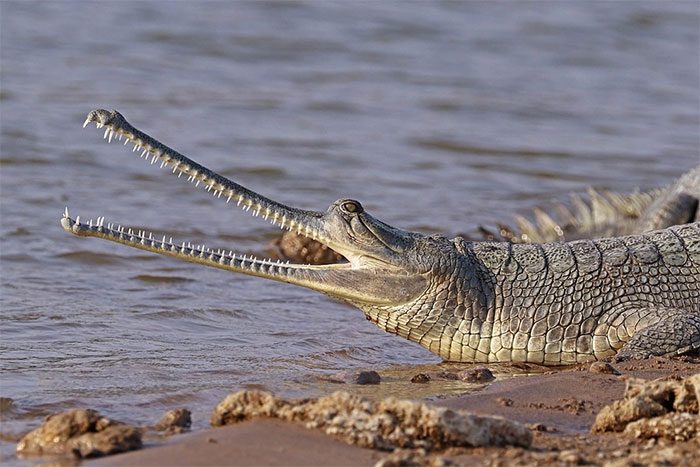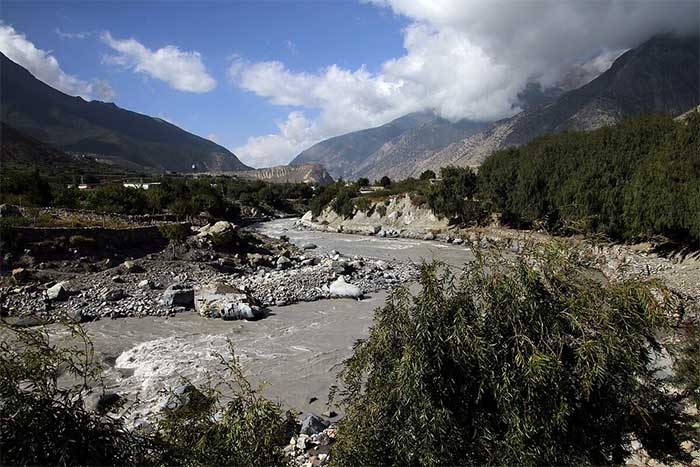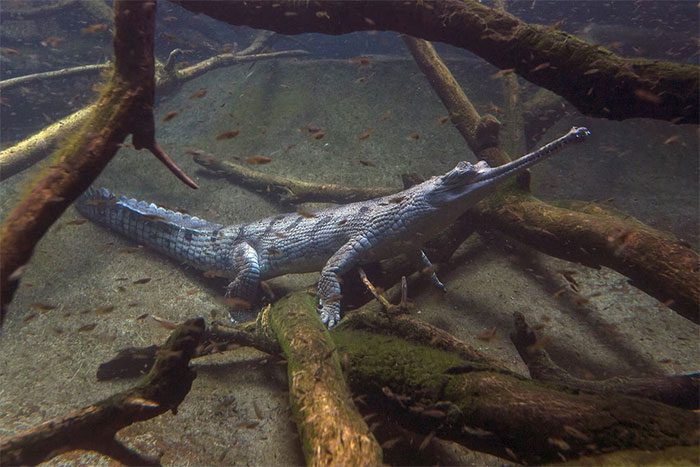Along the Gandak River in India, the long-snouted gharial crocodile is being rescued by local communities from the brink of extinction.

The gharial crocodile is named for the male’s snout, which resembles a traditional Indian clay pot called “gharia.” (Photo: Wikimedia Commons)
The gharial crocodile is currently found only in India and Nepal, having once been widely distributed across rivers in South Asia. Due to habitat degradation, hunting, and deaths from fishing nets, the population of this species has drastically declined.
According to the International Union for Conservation of Nature (IUCN), there were approximately 10,000 gharials in 1946, but by 2006, that number had plummeted to fewer than 250.
In response to the near-extinction of this species, the Indian government, along with non-profit organizations, has implemented conservation, breeding, and monitoring programs for gharial populations. As a result, the number of mature individuals in the wild has increased to about 650.

The Gandak River is one of the major rivers in Nepal and a left tributary of the Ganges River in India. (Photo: Wikimedia Commons)
One of the key initiatives is the Gandak Gharial Restoration Project, which is being carried out in 35 villages along the Gandak River. According to Samir Kumar Sinha, head of the ecology team at the Wildlife Trust of India (WTI), the rich wetland and sandy bank ecosystems of the Gandak River provide an ideal environment for gharials.
Local farmers and fishermen have taken on the role of caretakers for this crocodile species, voluntarily monitoring nests, overseeing nesting activities, and assisting in population surveys.
Jitendra Gautam, a crocodile nest guardian in Chilwania village, Pashchim Champaran district, shared: “In April, the villagers hold picnics by the river to celebrate the first sighting of a mother gharial laying eggs.”
Community members monitor each nest, which contains between 35 to 50 eggs. If they notice that a nest is at risk of being washed away, they will relocate it to a safer spot. Each egg is marked and covered with sand and netting to protect it from predators.
By mid-June, the hatchlings emerge and are carefully released back into the river near their mother’s nest. The community holds a celebration for the birth of the baby gharials, featuring a traditional dish called dahi-chura (a combination of yogurt and rice).

The gharial can grow up to 4.5 meters long and weigh up to 900 kilograms. (Photo: ZSSD/Minden).
Lalasha Yadav, a farmer in Lediharwa village, West Champaran district, expressed his emotions: “We are incredibly happy every time we see the little ones peeking their slender snouts out of the eggs.”
This conservation project not only helps revive a rare reptile species but also strengthens the bonds among local farming and fishing communities. Amidst the challenges of climate change and ongoing environmental degradation, collaborative efforts to protect rare animal species have become increasingly essential.


















































